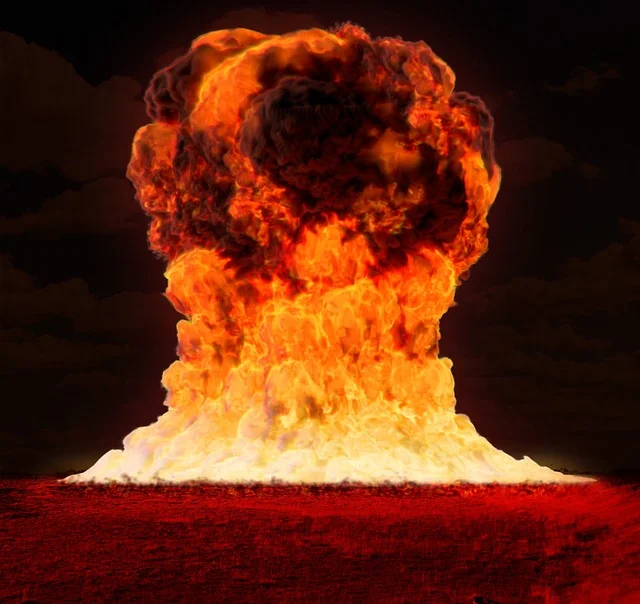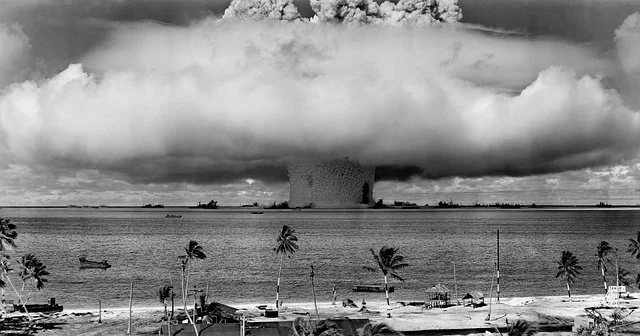The nature of war transformed with the creation of Atom Bombs in the 20th century. These destructive weapons have left an indelible mark in history, created by the Manhattan Project during World War II. In this blog, we aim to navigate the complex interplay of science, politics, and war to unveil the narrative surrounding the creation of these unprecedented tools of devastation.
Unleashing The Unprecedented Power of Atom Bombs

The Science Behind Atom Bombs
To comprehend the genesis of atom bombs, we must first grasp the underlying science.
, the two iconic bombs of the Manhattan Project, derived their immense destructive power from the fission of fissile elements. Uranium-235 and plutonium-239, carefully selected for their fission-friendly nature, played pivotal roles in this disastrous process. Fission, triggered by a neutron striking the nucleus of these isotopes, results in a chain reaction, releasing an overwhelming amount of energy—a key mechanism driving an atomic explosion.
- Advertisement -
The Architects of Destruction
The creation of atom bombs was no solitary endeavor. The brilliant minds behind these weapons of mass destruction were the scientists and engineers of the Manhattan Project. Under the leadership of General Leslie R. Groves and physicist J. Robert Oppenheimer, this collaboration unlocked the secrets of nuclear physics. The project built two distinct atom bombs, each retaining its different construction method and core material.
The Crucial Moments of World War II
The urgency to create atom bombs was because of the events of World War II. As the conflict raged on, Japan refused to Surrender. The Manhattan Project reached its peak, successfully concluding the testing of a plutonium-based bomb on July 16, 1945. This historic moment highlights the dawn of a new era, introducing a weapon of unprecedented power.
The Decision to Deploy Atom Bombs
The decision to drop atomic bombs on Hiroshima and Nagasaki was a mixture of complex factors. These complex factors, mixed with the devastating firebombing campaigns, set the stage for a drastic measure. The bombings served as a tool to expedite the end of the Pacific War, sparing potential casualties from a land invasion. Additionally, geopolitical considerations, including the growing tension with the Soviet Union, played a role in the decision-making process.
Critical Mass and Construction
In the intricate world of nuclear physics, achieving critical mass is paramount for an atomic explosion. Critical mass, the amount of fissionable material necessary to sustain a chain reaction, determined the success of an atom bomb. Little Boy and Fat Man employed different designs—gun-type and implosion—illustrating the meticulous balance of materials and timing required to avoid a fizzled explosion.
Conclusion: The Legacy of Unthinkable Power
The creation of atom bombs remains a chapter in history filled with ethical dilemmas and complex motivations. The profound impact of these weapons raises enduring questions about the cost of scientific progress and the power shaping global dynamics. As we reflect on the events surrounding the development and deployment of atom bombs, the legacy of their creation serves as a stark reminder of the responsibility that accompanies scientific innovation.


